ONTARIO’S CHIEF JUSTICES CALL FOR REINVESTMENT IN LEGAL AID AT COURT OPENING CEREMONY
John Schofield
Originally published in Law360™ Canada, © LexisNexis Canada Inc.
Two of Ontario’s top judges have urged the provincial and federal governments to reinvest in legal aid at a time when the COVID-19 pandemic has left many Ontarians at their most vulnerable.
“It is, quite frankly, a false economy to think that cutting these vital services saves money,” Ontario Court of Appeal Chief Justice George Strathy said during the annual Opening of the Courts of Ontario ceremony, which was held virtually on Sept. 22 and broadcast on the Court of Appeal’s YouTube channel.
“When litigants are unrepresented and unsupported,” he added, “the justice system slows to a crawl, valuable resources are drained, and other cases are held back. More important, the most vulnerable members of society, those whom our justice system purports to protect, are further victimized because their playing field is uneven.”
Chief Justice Lise Maisonneuve of the Ontario Court of Justice echoed that call. “Even more than before the pandemic arrived,” she said, “legal aid in this province needs to be properly funded to ensure that the most at risk in our society are served, particularly in light of the move to virtual proceedings, which many vulnerable litigants may be challenged to access due to limited access to telephones or Internet. Without the support that legal aid is intended to provide, justice may be out of their reach in this new reality.”
When litigants are unrepresented and unsupported,” he added, “the justice system slows to a crawl, valuable resources are drained, and other cases are held back. More important, the most vulnerable members of society, those whom our justice system purports to protect, are further victimized because their playing field is uneven.
The government of Premier Doug Ford cut Legal Aid Ontario’s budget last year by 30 per cent, or $133 million. This year, LAO has warned that the economic impact of the pandemic and interest rate cuts could leave the organization with as much as a $70-million hole in its 2020-21 budget due to reduced funding from the Law Foundation of Ontario.
This year’s Opening of the Courts event also featured remarks from Chief Justice Geoffrey Morawetz of the Superior Court of Justice, Attorney General Doug Downey, Law Society of Ontario treasurer Theresa Donnelly and Anne Turley, senior general counsel in the federal Department of Justice’s Litigation Branch, who was representing federal Justice Minister David Lametti.
Physically distanced and separated by plastic barriers, the three chief justices presented their remarks to an empty Courtroom 2 at Toronto’s Osgoode Hall as their speeches were broadcast to attendees on YouTube via Zoom. Other speakers also joined on Zoom.
With the attorney general tuned in, Chief Justice Morawetz also called on the province to implement a new model of courts administration that would give Ontario’s court system more control over its limited resources. He pointed to examples such as the Supreme Court of Canada, the federal courts and the British Columbia courts.
“COVID-19 has shone a bright light on the frailties of the current model of courts administration, the absence of sufficient technology and the overly bureaucratic nature of government that inhibits the effective operation of the courts,” he said, noting that five out of six reports since 1973 have recommended that Ontario abandon its current model of executive control. “This reform is necessary to ensure the court remains independent of government and has the resources it needs to function effectively.
“This issue remains a top priority for the court,” he added, addressing Downey directly. “I am eager to have further discussions with you so that meaningful, transformative and permanent change can occur, in keeping with the constitutional and institutional independence of the court, and which will extend beyond your term and mine.”
In his own remarks, Downey was noncommittal, sounding a note of fiscal conservatism as the provincial budget faces unprecedented pressure amid the pandemic. “While we must make important investments to strengthen our justice system, we must do so prudently, carefully and in a transparent and accountable manner,” he said. “Decisions on where and how to invest resources are not always simple, nor should they be, and we are committed to making the right choices, smart choices, for Ontarians and its justice system and its partners.”
All three chief justices spent a significant portion of their speeches paying tribute to fellow justices, government officials and members of the bar for high level of collaboration and support during what Chief Justice Strathy called “a turning point in world history.”
“The foundations of our society,” he noted, “have been shaken in a manner unprecedented in most of our lifetimes.”
On behalf of the chief justices, he offered particular thanks to the province’s numerous legal associations and their members for their “extraordinary contributions” to “sustaining the justice system in this time of crisis.”
“They have been generous in sharing their knowledge and expertise with the courts,” he added, “have provided technical assistance with virtual hearings, drafted best practice documents, educated their members and have been a sounding board for timely and productive consultations.”
Chief Justice Morawetz celebrated the resilience of Ontario’s judicial system by noting that the Superior Court alone has heard just over 50,000 virtual hearings since March 2020 and the “courts never closed.”
But the courts must be careful to ensure that the system’s increasing reliance on technology does not close out certain communities — especially the most vulnerable, he cautioned.
To that end, he explained, the Superior Court and the Ontario Court of Justice earlier this year partnered with the private sector to distribute cell phones and SIM cards to children’s aid societies, the Ontario Association of Interval and Transition Houses and the Barbra Schlifer Legal Clinic.
Chief Justice Morawetz said the province’s court system is also trying to address concerns by the news media that the huge increase in virtual hearings is making court proceedings less accessible to the public and media. Some hearings have been broadcast on a private YouTube channel, attracting in one instance more than 20,000 viewers, he noted.
Without openness and transparency, the legitimacy of the court as the third branch of government is at risk,” he said.
“Without openness and transparency, the legitimacy of the court as the third branch of government is at risk,” he said.
“But the court must also be mindful of the unanticipated impacts of new technologies,” he added. “For example, with sensitive testimony, broad publication may inhibit effective testimony, and, for some, it may inhibit access to the justice system in the first place. A balance must be struck.”
Acknowledging the social temper of the times, all three chief justices commented extensively on renewed public outrage around the world this year over racial prejudice and the institutional maltreatment of minority communities, with a particular focus on anti-Black and anti-Indigenous racism.
“Will this horrendous global pandemic,” asked Chief Justice Strathy, “teach us anything about the commonality of human suffering, the humanity and dignity of all peoples and what it means to share this planet with others?”
Chief Justices Maisonneuve and Morawetz highlighted continuing judicial education programs focused on addressing discrimination and bias in all forms. Both the Superior Court and the Ontario Court of Justice have also formed equity, diversity and inclusion committees to advise the chief justices on relevant issues, as well as education and awareness programs.
“Our commitment to address discrimination and create a culture of anti-racism,” said Chief Justice Maisonneuve, “has been renewed following the events of recent months.”
Chief Justice Strathy said he is encouraged “by the appetite I see to rethink the way we do things” in a number of areas — including legal education. He complimented, in particular, Canada’s newest faculty of law at Toronto’s Ryerson University. “At the core of the law school’s mandate,” he noted, “is a commitment to integrate law with technology and to incorporate equity, diversity and inclusion within all aspects of legal education.”
A growing openness to law reform is also cause for optimism, he said. “There is increasing recognition that we, as a society, need to reconsider how we define ‘crime,’ ” he noted, “and whether some offences, labelled criminal, should be regarded as health-related matters and addressed therapeutically.”
The judicial branch can play a vital role in creating a just society that protects the rights and freedoms of all people, said Justice Strathy, but only if it is strong and vibrant.
It will take more — much more — to build a better justice system than simply more computers and more video screens,” he added. “I believe we must radically rethink the process we use to achieve justice. We need to examine the way we do justice in criminal, family and civil cases and ask ourselves whether there is a more just, cost-effective and cost-efficient way to do things at every stage of the proceeding.
“It will take more — much more — to build a better justice system than simply more computers and more video screens,” he added. “I believe we must radically rethink the process we use to achieve justice. We need to examine the way we do justice in criminal, family and civil cases and ask ourselves whether there is a more just, cost-effective and cost-efficient way to do things at every stage of the proceeding.”
In her remarks, Law Society of Ontario treasurer Teresa Donnelly lauded the “superhuman” work of Ontario’s judicial leaders in confronting the challenges of the COVID-19 pandemic.
“Their responsive, insightful and timely actions enhanced the public confidence in the justice system,” she said. “With Chief Justice Strathy as the architect, with the pillars of the justice system — Chief Justice Morawetz, Maisonneuve and Attorney General Downey — and with support from colleagues, stakeholders, the law society and legal professions, we can and are building a better justice system.”
Donnelly also underlined the importance of mental health for all those working in the system. “Addressing mental health, wellness and addiction issues in the legal professions is a priority for the law society and a personal priority for me,” she added. “We need to look after ourselves. We need to look out for and after each other. We cannot continue our important work in the justice system without self-care, our health and being mindful of the impacts individually and collectively.”






 Discrimination against minority businesses may be happening more frequently, but is not attracting legal attention, said Miguna.
Discrimination against minority businesses may be happening more frequently, but is not attracting legal attention, said Miguna.


